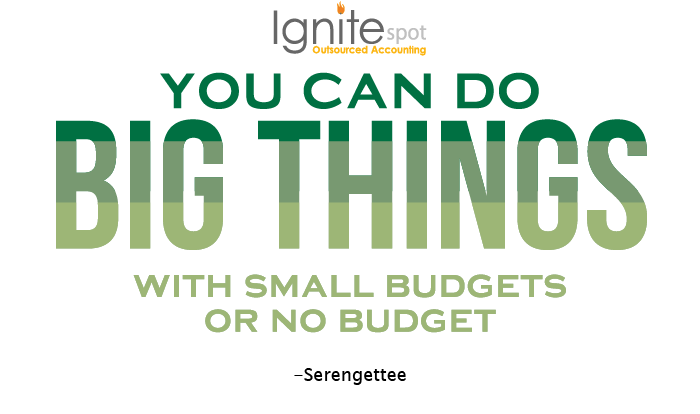
A rising tide lifts all boats, as they say. In business, partnering up with another brand to accomplish a shared objective can make reaching your goal twice as easy.
If you’re a new company, or if you’re seeking to take your existing company into a new vertical, a cross-promotion is a great way to get your brand in front of a whole new set of eyes.
This post is a crash course on why you might decide to cross promote, how to choose the right partner, and how to execute on the shared promotion.
You Scratch My Back, I’ll Scratch Yours
One of the hardest parts of launching a business is getting the word out there about yourself. It’s like trying to push a heavy boulder; once you actually get the thing rolling, it’s not that hard to push, but getting that first inertia takes a lot of “oomph.”
Partnering up with a brand that’s already established is a great way to get that initial push.
Secondly, people buy things that are recommended to them by someone they trust, whether it’s a friend, a reviewer on the internet or a brand they already love. By partnering with an existing brand, you’ll piggy back on the credibility they’ve already built with their audience.
But why would another brand just do you a favor and promote you to their audience? Wouldn’t they want to keep all the sales for themselves? Well, a partnership has something in it for them, too. You just have to show them what it is.
Figure Out What You Bring To The Table
 As you prepare to approach another brand about a partnership, you must figure out what you bring to the table, what value you can provide for your partner.
As you prepare to approach another brand about a partnership, you must figure out what you bring to the table, what value you can provide for your partner.
If you’re selling a fantastic product, that alone is valuable. Customers love discovering great new things to buy, and your partner can be the one to introduce your product to them, thus building value in their customers’ eyes.
If you’ve already established your own audience, offering access to it is another great value proposition. Ideally, you’ll partner with a brand that complements yours, so it’ll make sense for you to introduce their product to your audience and vice versa.
If you’re lacking an audience, you might tip the scales with other resources, like a budget dedicated to social media promotion of your partnership or man-hours for graphic design, content creation or another asset you’ll share with your partner.
Finally, your offer might be for a shared profit or royalty on any products sold as a result of the partnership (for example, your partner shares your product on Facebook and receives a 30% commission from any resulting sales).
Whatever you’re offering, go all-in. Put so much value into it for your partner that they’d be silly to turn you down. They’re doing you a favor, after all, by helping promote your brand. Show them that you’re truly interested in creating a partnership that’s mutually beneficial, not just taking a free handout from them.
Choosing the Right Partner
You’ve put some thought into what you might offer a partner; now it’s time to nail one down!
Here are two factors to consider when identifying and pitching potential partner brands.
Niche
You want to find a brand that complements yours without competing with it.
For example, let’s say your product is your homemade peach salsa. It might make sense for you to team up with a cookware company, or with someone who makes amazing homemade pita chips. It probably wouldn’t make sense to team up with another salsa company or someone who makes a different peach product, as they compete directly and indirectly with you.
Don’t be afraid to get creative; as long as your target demographic is the same, there might be a way to make a partnership work!
Size
The next key factor is the size of the company and its following.
If you just launched your business last week and have ten social media followers, it’s not a good fit to reach out to a brand with 100,000 followers and ask to team up. Your sizes are too disproportionate and you can’t realistically offer them enough value to make it a good partnership.
Ideally, you want a brand that’s a little larger—but not too much larger—than yours. This way there’s ground to be gained by working together yet it’s not a one-sided relationship. Make sense?
Executing Your Partnership
There are endless partnership arrangements you might come up with, from giveaways to discount codes to holding events together. I wanted to end by sharing two simple, effective partnership ideas I’ve found success with in the past.
Free Gift With Purchase
 If your product is something you can give away as a sample, partner up with a larger brand who will include your free gift with their purchase.
If your product is something you can give away as a sample, partner up with a larger brand who will include your free gift with their purchase.
You’ll start out by sending them a set quantity, say 100 or 1,000 samples, with a discount code attached to each one. The discount code is meant to be applied to the customer’s full-price purchase if he or she likes the sample.
You partner will include your sample with each of his next orders. In exchange, he’ll will receive a portion of the proceeds from each sale that results (which you’ll track by the designated promo code).
You’ll need to work out the math so it makes sense for your margins, and you might end up only making a fraction of your normal proceeds on sales from this partnership. But remember—if you’re able to able to win a loyal customer from the deal, that lifetime value will more than pay for the up front cost of the partnership.
Email Giveaway
Here’s a good option if your product is a higher value, or is something you can’t give a bunch of free samples of.
Find a partner with a product that complements yours nicely, then agree to give away a gift set that contains each of your products. In this case, you’ll each only need to give away a minimum of one thing.
Set up a landing page on your website where you’ll capture email addresses in exchange for entry into the contest. Make sure to have a check box (already checked by default) that opts the customer into your mailing list.
Then, work with your partner to promote the contest and landing page, sharing it on your social media channels, in your brick and mortar location and with your existing email subscribers. Two weeks to a month is a good length of time for running the giveaway.
At the end of the giveaway, draw a winner and send off their gift set. What you’ll be left with is a nice sized list of new email addresses, which you and your partner can market to by following up with a discount code, blog posts they might like or some other special offer.
Additional Resources
How to Pick a Business Partner You Won't Regret Down the Road














.png)


